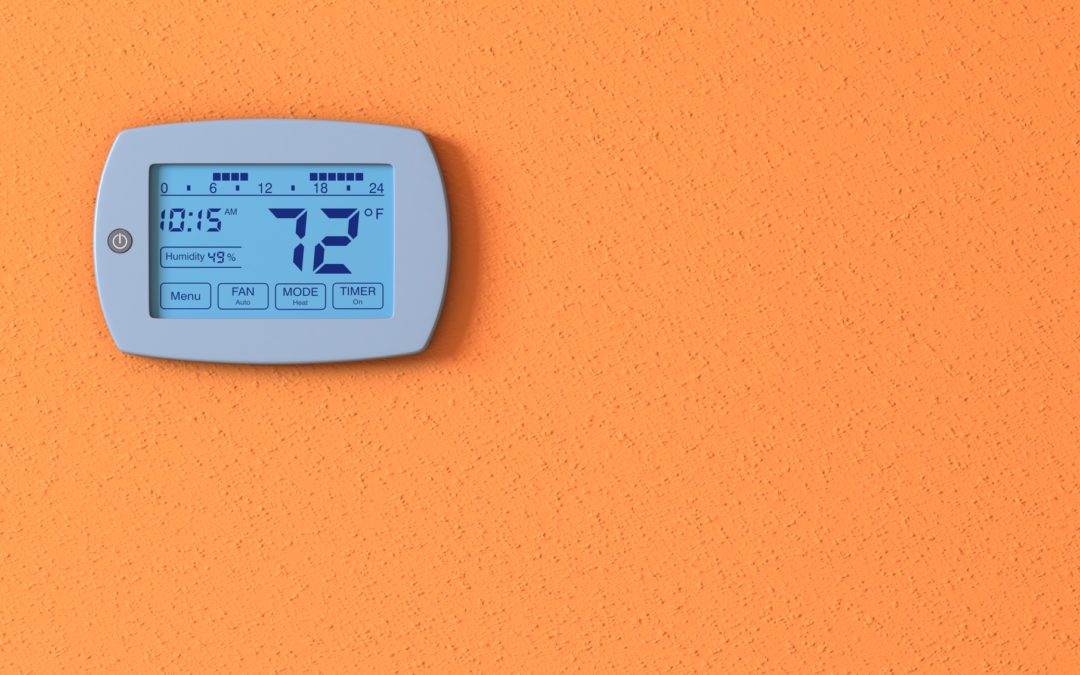HVAC Manufacturers have, over the years, aimed to provide energy-efficient products. For decades, thermostats have been used to regulate the temperature within buildings. According to the Energy Information Administration (EIA), residential thermostats control roughly 50 percent of a household’s energy consumption. In broader terms, that equates to 11 percent of the nation’s total energy use.
Statistics such as these were posing a threat to the environment due to the burning of fuel for electricity. Hence the need for the development of an HVAC system that would reduce the strain on electricity supply. Modern systems include a smart thermostat, an upgrade to programmable thermostats in that they’re connected to the internet via Wi-Fi and can be controlled through your smartphone from any location in the world. Homeowners who have already installed this feature may have come across ‘recovery mode’ on their smart thermostat. While it’s natural to think there is an error immediately, it’s indeed the opposite. ‘Recovery mode’ is not a smart thermostat error and we’ll explain why.
What is a Smart Thermostat?
Programmable thermostats are responsible for automatic climate control without you, the user, physically adjusting the settings. The US Department of Energy has estimated that homeowners can save between five and 20 percent of their heating and cooling costs through a programmable thermostat. A smart thermostat carries all the benefits of a programmable thermostat but eliminates the issues and improves on its final product.
Smart thermostats contain an array of features including, remote access for climate control, adaptive learning, and full automation, to name a few. These upgraded thermostats inform users of both the interior and exterior temperature, how long the HVAC system has been in operation and if you need to change the air filter. Other benefits of a smart thermostat are that it ‘learns’ your temperature preferences and establishes a schedule to automatically adjust to energy-saving mode when you’re asleep or away. Geofencing allows the thermostat to ‘know’ when you’re about to arrive home, and it starts conditioning the air according to your liking. This is when users may encounter that the system is in ‘recovery mode’ and immediately assume the worst.
What is Recovery Mode?
It’s natural to think negatively when those words appear on your thermostat’s interface. You’re probably wondering how much this repair is going to cost you. However, this setting is helpful in the conservation of energy. You’d come across the words ‘recovery mode’ or ‘smart recovery’ depending on the brand, when the thermostat has been off for a while, then suddenly starts up automatically. There’s no cause for concern as the system is simply recovering from resting and beginning to work toward achieving the ideal temperature for your home.
During this period, the smart thermostat regulates the temperature to be cooler or warmer than it is outside. Recovery mode assists the system to slowly generate the desired effect while obtaining the perfect temperature before you enter your home after a day at work.
Smart Thermostat Errors
You might assume there’s an error with your thermostat if you haven’t set it to regulate the temperature automatically and it still does. In this case, it’s the thermostat that has changed its settings without your input. It’s not uncommon for smart thermostats to adjust its settings based on patterns. A power surge may erase everything the smart thermostat has ‘learned’, thus causing it to reset to default. Finally, there may be a system issue that needs resolving. If you’ve noticed a lack of performance from your HVAC system, then the thermostat is communicating that message to you via ‘recovery mode’.
How Does Recovery Mode Save Energy?
At first glance, it appears that if an HVAC system is turned on an hour before you enter your home, it will consume more electricity than if you turn it on yourself when you arrive. However, your HVAC system has to work harder, wasting more energy to cool or warm your house in a short space of time. Vigorous working of the system may result in breakdowns.
The smart thermostat recovery mode gradually changes the temperature within your home, consuming less electricity and decreasing the impact on the HVAC system components.
Conclusion
There are smart, independently certified thermostats that are ENERGY STAR™ labeled. To obtain this rating, the thermostat would have gone through actual testing and as a result of its performance in the field, delivered energy savings. You save on electricity consumption as it adopts a low-power mode when it’s inactive. Furthermore, smart thermostats provide you with insightful information that you can use to determine your household’s energy consumption in the future.
Valley Comfort has experienced technicians that are qualified to advise you on a smart thermostat recovery mode and assist with any potential errors.

